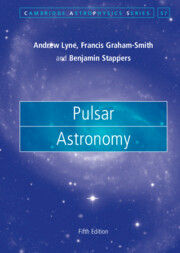Book contents
- Frontmatter
- Contents
- Preface
- Part I Discoveries and Techniques
- Part II Observed Physical Characteristics
- Part III Neutron Star Physics
- Part IV Environments and the Interstellar Medium
- 18 Supernovae and Their Remnants: Pulsar Wind Nebulae
- 19 Interstellar Scintillation and Scattering
- 20 The Interstellar Magnetic Field
- 21 Prospects
- References
- Index
21 - Prospects
from Part IV - Environments and the Interstellar Medium
Published online by Cambridge University Press: 21 July 2022
- Frontmatter
- Contents
- Preface
- Part I Discoveries and Techniques
- Part II Observed Physical Characteristics
- Part III Neutron Star Physics
- Part IV Environments and the Interstellar Medium
- 18 Supernovae and Their Remnants: Pulsar Wind Nebulae
- 19 Interstellar Scintillation and Scattering
- 20 The Interstellar Magnetic Field
- 21 Prospects
- References
- Index
Summary
Advances in observing techniques, the commissioning of new radio telescopes and the prospect of the Square Kilometre Array are opening new fields of pulsar research. The 55 years since the discovery of pulsars have revealed a rich and evolving population and shown how precise timing can transform our understanding of neutron star structure, binary system dynamics, stellar populations and the interstellar medium, and have opened new prospects in general relativity physics. X-ray and gamma-ray telescopes, and Cerenkov shower arrays, are extending observations over the whole electromagnetic spectrum.
Keywords
- Type
- Chapter
- Information
- Pulsar Astronomy , pp. 359 - 363Publisher: Cambridge University PressPrint publication year: 2022

